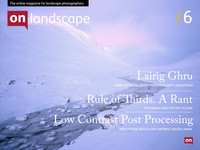Featured photographer

Tim Parkin
Amateur Photographer who plays with big cameras and film when in between digital photographs.
Tristan Campbell
Tristan Campbell is a photographer whose work stood out for me when I started working with the camera.
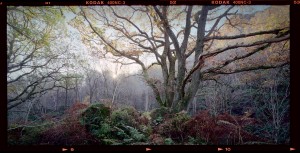 Tristan Campbell is a photographer whose work stood out for me when I started working with the camera. His pictures of the Hebrides were particularly interesting and had a unique style that transformed his pictures. Since those early pictures, I have watched as he started using a large format camera at a similar time that I did, but it wasn't the type of camera that I was interested in, it was the original vision of the landscape that made his pictures different. His excellent (self developed) photoblog is always an inspiration and the work he produces always rewards the time spent looking. Very recently I bought his 8x10 camera off him as he is moving to a lighter weight Walker 4x5 camera (the 8x10 camera weighs nearly 14lb with no lens! Possibly not the most practical beast to go camping with) and asked if he would mind answering a few questions for us.
Tristan Campbell is a photographer whose work stood out for me when I started working with the camera. His pictures of the Hebrides were particularly interesting and had a unique style that transformed his pictures. Since those early pictures, I have watched as he started using a large format camera at a similar time that I did, but it wasn't the type of camera that I was interested in, it was the original vision of the landscape that made his pictures different. His excellent (self developed) photoblog is always an inspiration and the work he produces always rewards the time spent looking. Very recently I bought his 8x10 camera off him as he is moving to a lighter weight Walker 4x5 camera (the 8x10 camera weighs nearly 14lb with no lens! Possibly not the most practical beast to go camping with) and asked if he would mind answering a few questions for us.
In most photographers lives there are 'epiphanic' moments where things become clear, or new directions are formed. What were your two main moments and how did they change your photography?
 The first such moment has to be a few years ago when my wife bought me a small lightweight tent for my birthday. It simply opened up so many new possibilities for me. I could position myself in remote locations and photograph well past sunset, then at dawn you have a second chance in different conditions.
The first such moment has to be a few years ago when my wife bought me a small lightweight tent for my birthday. It simply opened up so many new possibilities for me. I could position myself in remote locations and photograph well past sunset, then at dawn you have a second chance in different conditions.
The second one would have to be the period of reflection after my son fell critically ill at just five weeks old. Thankfully and miraculously he pulled through and is now a beautiful healthy toddler. After this disturbing time the pull back to the area I had been photographing just the day before he fell ill seemed even stronger. I think this was the point at which my photography changed direction somewhat and I settled fully into large format photography.
I remember seeing some of your 'early' pictures (at least as early as I can find) and seeing a distinct change in style happening on your Hebrides trip. I was very impressed with the feel that you created with "It's here as it breaths" and "Never the Rainbow". Was there something about this trip that was 'different' and why don't we see similar photographs later on?
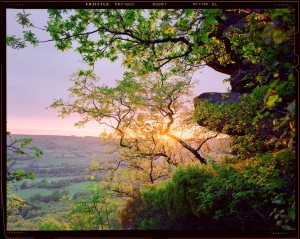 My photography has developed and changed directions over time and I hope it continues to do so. In my late teens and early twenties I was very much into gritty, grainy black and white urban photography. Then I explored the landscape first with 35mm film and then digital. I tended to travel light and fast which allowed me to react to the light and weather conditions and cover a lot of ground.
My photography has developed and changed directions over time and I hope it continues to do so. In my late teens and early twenties I was very much into gritty, grainy black and white urban photography. Then I explored the landscape first with 35mm film and then digital. I tended to travel light and fast which allowed me to react to the light and weather conditions and cover a lot of ground.
These days I explore the local landscape which for me is Nidderdale in North Yorkshire. I guess I tend to have a more considered approach now, usually planning well ahead by researching maps, sunrise times and directions. I have a long list of places to visit at certain times of the year and I know what weather conditions I'm hoping to hit on. To do this I'm perfectly content to visit the same location a dozen times to get the exact picture I have in my mind, rather than to come back with a handful of pictures which are ok but not really what I was looking for.
You moved from digital photography to 4x5 film and then 8x10 film. What was it about film that converted you and having used it for a while, what is it that keeps you using it?
The move from digital to 5x4 took quite a while. At first I always took a digital camera with me in addition to the large format camera and this combination just did not work for me. I always ended up using digital and neglecting the large format. Once I ditched digital completely the large format camera came into its own.
With the recent addition of a Jobo CPE (thanks to your blog for the inspiration) I can now handle the entire process myself. To end up with a physical result which has taken considerable effort to achieve is very satisfying.
There is also something to be said about going out with such a basic camera after working on a computer all day long. It is nice to leave technology behind for a while and be in complete control of the picture taking process.
However computers cannot be left out completely. For me one of the most important things about using film is the digitisation process. Early after getting into large format I was lucky to acquire a second hand drum scanner. The quality of scans from these machines is just incredible and had I not had access to this I feel I may well have returned to digital out of frustration of not being able to extract the information from the film.
You return to the same places again and again, finding new compositions and feels - do you think this process improves your ability to see when you then go to new places?
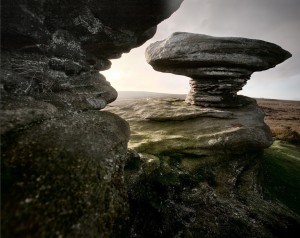 Returning to the same location again and again is very important to me at the moment. I've been photographing the same small area of land now for at least 4 years. By getting to know a location so intimately it becomes a really special place that you are personally attached to. The more you look, the more you see. Almost every time I visit I seem to stumble upon something I've never noticed before despite walking past it sometimes hundreds of times.
Returning to the same location again and again is very important to me at the moment. I've been photographing the same small area of land now for at least 4 years. By getting to know a location so intimately it becomes a really special place that you are personally attached to. The more you look, the more you see. Almost every time I visit I seem to stumble upon something I've never noticed before despite walking past it sometimes hundreds of times.
Such an approach certainly is an exercise in learning to see but I'm not sure it significantly improves my ability to see when I visit somewhere new for the first time. Usually I will research any new location before setting off and once there find that I'll typically locate my picture quickly. Then if the location was inspiring, I'll revisit under different conditions and in different seasons.
You have mentioned to me previously that finding time for photography is a challenge, how do you ensure that you get out as much as you want?
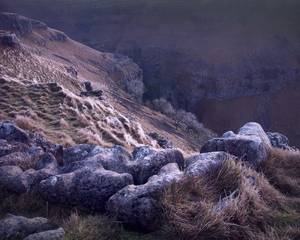 Yes, finding time to get out can be very difficult with a young family, school, nursery runs and a full time job. Winter always seems to be the hardest with such short days. Late spring to early autumn are my most productive months. In summer if you get up early enough you can get to your location pre-dawn, spend a couple of hours exploring and photographing and be back home before the rest of the family even wakes. During these early hours you have the landscape completely to yourself - other than the police who seem to pull me over on a regular basis if I go out between 2 and 4am that is.
Yes, finding time to get out can be very difficult with a young family, school, nursery runs and a full time job. Winter always seems to be the hardest with such short days. Late spring to early autumn are my most productive months. In summer if you get up early enough you can get to your location pre-dawn, spend a couple of hours exploring and photographing and be back home before the rest of the family even wakes. During these early hours you have the landscape completely to yourself - other than the police who seem to pull me over on a regular basis if I go out between 2 and 4am that is.
In the end it doesn't really matter if you can't manage to get out for a few months. I'm not trying to earn a living from photography and it just makes the next time you do get out that bit more special.
Your granddad, Cyril Campbell, was an accomplished photographer - please tell me a little bit about him and how he influenced you as a photographer.
Photography was a real passion for my granddad, I have a lifetimes worth of his negatives and slides up in the loft just waiting to be explored further. I believe he actually took the same route as myself in that photography developed from his considerable skill at painting. The landscape was probably his favourite subject but he was equally at home photographing still life or portraits and he had a real knack for winning competitions.
Unfortunately my real passion for photography only really started to develop about a year before he passed away. I will always feel regret that we did not have much time to explore photography together. There were so many questions left unanswered and he had so much to teach. He is a major source of inspiration and motivation for me and he always will be.
You go camping with your camera, how do you manage to carry a large format camera set up and all of your camping gear? Does being 'embedded' in a location provide something that a single visit doesn't?
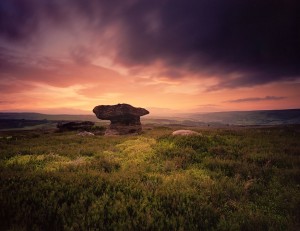 Managing equipment when camping is simply a matter of compromising. I have a lightweight 65 litre backpack which leaves just enough room for my 5x4 camera, one lens and some film once it has been packed with the essential, basic, camping gear. For choice of lens I always take my 65mm Nikon which I find is my most used lens.
Managing equipment when camping is simply a matter of compromising. I have a lightweight 65 litre backpack which leaves just enough room for my 5x4 camera, one lens and some film once it has been packed with the essential, basic, camping gear. For choice of lens I always take my 65mm Nikon which I find is my most used lens.
Single visits are absolutely fine but I guess it comes back to my desire to know and experience a place more intimately. You really do get to know a mountain by spending the night on it, I've certainly had some experiences I'll never forget. You can position yourself in a hard to reach locations and not have to worry about getting back down before it is dark (or descending in darkness). It's just a great experience to become part of the landscape you are photographing.
You started your art with oil painting and sketches, how does that experience influence your photography?
As a teenager I have to admit I was rather obsessed with oil painting. I would often start a painting and not stop until it was finished, no matter how late at night. The landscape was a dominant subject matter and I was very much inspired by old masters such as Constable, Turner, Jacob Van Ruisdael and Caspar David Friedrich. Lots more inspiration came from modern artists and illustrators such as Mark Hamilton, Daniel Chard and H R Giger to name just a few.
For me the picture 'Autumn Past' shows a strong link to Caspar David Friedrich but overall I hope that these influences do not show through too prominently. It is important to have your own vision and outlook on your subject matter but inspiration is equally important to bring both fresh thoughts and motivation.
You primarily use negative film, something I haven't done a lot of myself. How do things like dynamic range, colour, detail compare with digital capture. (Oh, and why the rebate?)
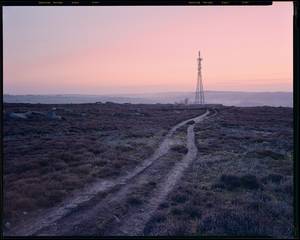 Right from the outset starting with large format I decided I would be using colour negative film exclusively. My first 5 working years were spent developing and scanning colour negatives for a daily newspaper so I was already very familiar and comfortable with the medium.
Right from the outset starting with large format I decided I would be using colour negative film exclusively. My first 5 working years were spent developing and scanning colour negatives for a daily newspaper so I was already very familiar and comfortable with the medium.
The most obvious difference for me between film and digital is in the way film handles highlights. Digital tends to give a rather harsh cut off for blown highlights. Film on the other hand keeps building up density giving a beautifully smooth transition.
The dynamic range of colour negative never fails to amaze me. With digital I relied heavily on graduated neutral density filters to handle the highlights. At first I did the same with colour negative film but I soon realised they were generally just not required. I find the tonal range has much more depth and the subtler colour of negative film very satisfying. Typically I tend to overexpose the Fuji by about a stop which gives beautiful pastel colours and ensures you have good shadow detail.
On my blog, which is a rather informal showcase of my work, I do indeed tend to include part of the negative in the presentation of my pictures. I guess the reason for this is simply to show that the image really was taken on film. People always seem to assume a photograph is taken on a digital camera and I think it is nice to show that film really is an extremely capable medium to work with and a viable alternative to digital.
Owning both film and digital cameras, how do you compare the advantages and disadvantages of each?
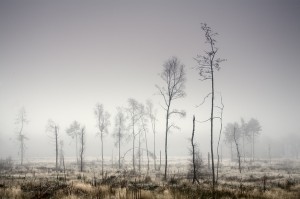 There are very distinct advantages to both. Digital allows you more freedom to work fast, experiment and learn. The quality of digital can be amazing, particularly at high iso speeds. Typically I use digital for social events such as the odd wedding where the pressure to work fast and deliver high quality results is high.
There are very distinct advantages to both. Digital allows you more freedom to work fast, experiment and learn. The quality of digital can be amazing, particularly at high iso speeds. Typically I use digital for social events such as the odd wedding where the pressure to work fast and deliver high quality results is high.
However not being able to see the immediate results with film can place you in a different mindset where you are concentrating more on your subject matter rather than checking if you got the shot. Colour negative film is simply amazing, for me the perfect medium to work with. You can achieve a completely different look to digital, pastel colours, wonderful highlights - even film grain can be used to great effect.
What sorts of things do you think might challenge you in the future or do you have any photographs or styles that you want to investigate?
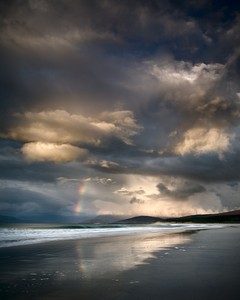 In the immediate future my aims are:
In the immediate future my aims are:
To perfect my view camera technique further so I'm squeezing the utmost quality out of the medium.
Develop my vision to use a wider variety of focal lengths to my usual ultra wide angle lens selection.
Fit in more camping trips and perhaps even a visit to the coast.
Other than that I'm looking forward to exploring my usual square mile further and maybe even venturing into the next OS grid square!
Longer term I'd like to develop ideas for pictures depicting mans influence on / position in the landscape.
Who do you think we should feature as our next photographer?
I know this is a British based magazine but over the last year I've been following a couple of American photographers who's work I have found very inspiring. Two of these in particular would be Ben Horne and Joel Truckenbrod.
Back here in the UK I always find David Clapp's work to be a huge inspiration but in general I do try not to spend too much time looking at other peoples work in case I start to inadvertently copy!
Many thanks for Tristan for this very interesting interview and for the permission to include some of his pictures. You can see more of Tristan's work at http://www.tristancampbell.co.uk/.

